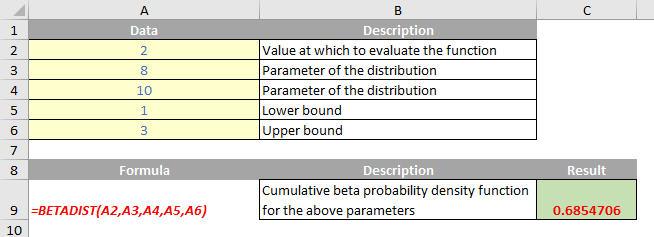A to Z of Excel Functions: The BETADIST Function
21 November 2016
Welcome back to our regular A to Z of Excel Functions blog. Today we look at the BETADIST function.
The BETADIST function
In probability theory and statistics, the beta distribution is a family of continuous probability distributions defined on the interval [0, 1] parametrised by two positive shape parameters, denoted by α (alpha) and β (beta), that appear as exponents of the random variable and control the shape of the distribution. It has nothing to do with either the beta function (Euler integral) used in other areas of mathematics or the beta cited as the scalar in the Capital Asset Pricing Model.
The beta distribution has been applied to model the behavior of random variables limited to intervals of finite length in a wide variety of disciplines. For example, it has been used as a statistical description of allele frequencies in population genetics, time allocation in project management / control systems, sunshine data, variability of soil properties, proportions of the minerals in rocks in stratigraphy and heterogeneity in the probability of HIV transmission. Who’d have thought statistics and Excel could be so interesting?
In Bayesian inference, the beta distribution is the conjugate prior probability distribution for the Bernoulli, binomial, negative binomial and geometric distributions. For example, the beta distribution can be used in Bayesian analysis to describe initial knowledge concerning probability of success such as the probability that a space vehicle will successfully complete a specified mission. The beta distribution is a suitable model for the random behavior of percentages and proportions.


The usual formulation of the beta distribution is also known as the beta distribution of the first kind, whereas beta distribution of the second kind is an alternative name for the beta prime distribution.
The BETADIST function returns the cumulative beta probability density function. The beta distribution is commonly used to study variation in the percentage of something across samples, such as the fraction of the day people spend watching television or writing articles like this. Be careful: there is a similar function called BETA.DIST which is slightly different (see last time).
The BETADIST function employs the following syntax to operate:
BETADIST(x,alpha,beta,[A],[B])
The BETADIST function has the following arguments:
- x: required. This represents the value between A and B at which to evaluate the function
- alpha: also required. This is a parameter of the distribution
- beta: required. This is also a parameter of the distribution
- A: this is optional. This is a lower bound to the interval of x
- B: this is also optional. This is an upper bound to the interval of x.
It should be further noted that:
- If any argument is nonnumeric, BETADIST returns the #VALUE! error value
- If alpha ≤ 0 or beta ≤ 0, BETADIST returns the #NUM! error value
- If x < A, x > B, or A = B, BETADIST returns the #NUM! error value
- If you omit values for A and B, BETADIST uses the standard cumulative beta distribution, so that A = 0 and B = 1.
Here is an example:

Essentially, BETADIST is the slightly less flexible version of BETA.DIST and represents the TRUE variant of the function introduced in Excel 2010.
We’ll continue our A to Z of Excel Functions soon. Keep checking back – there’s a new blog post every other business day.

